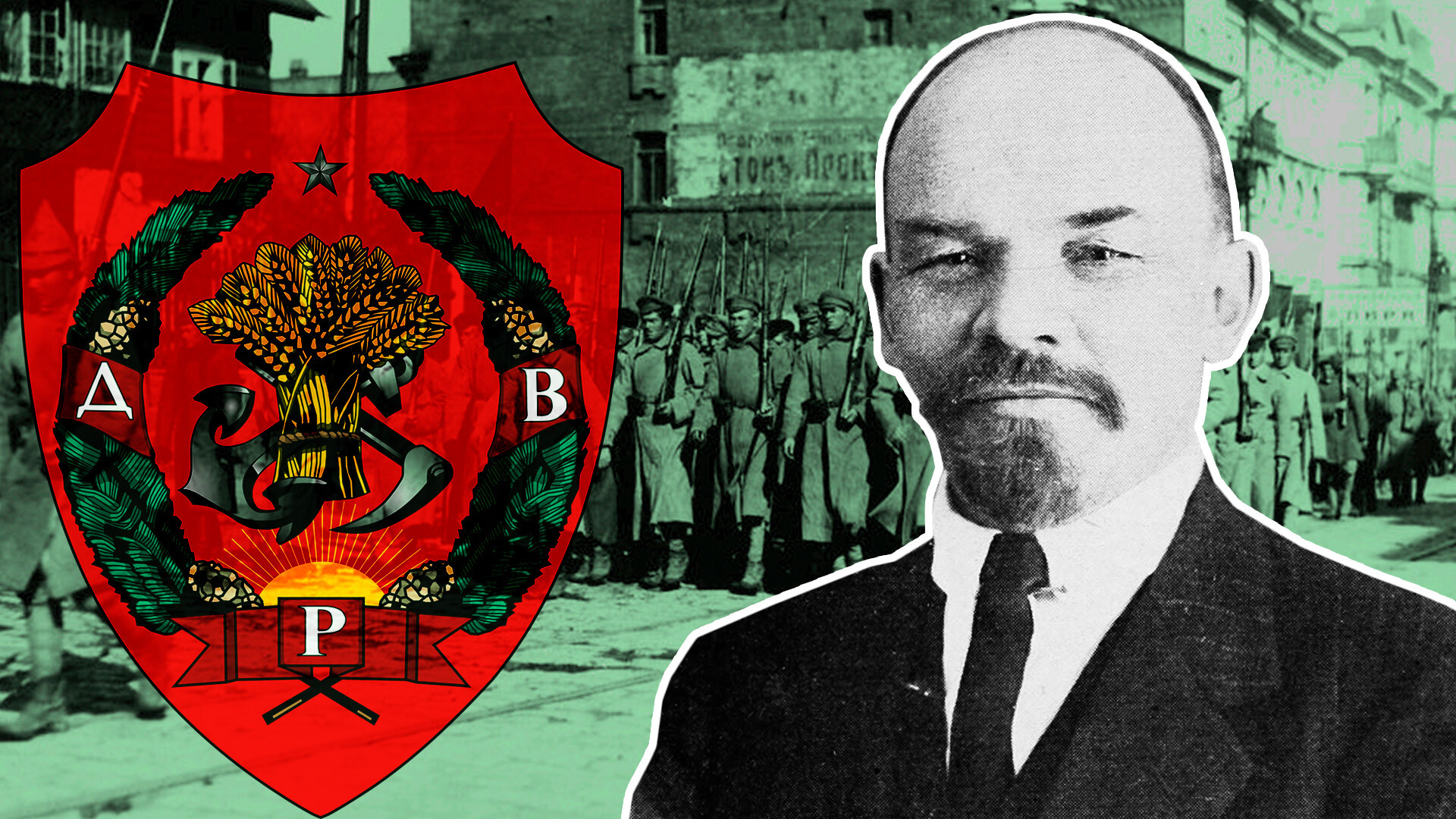
During the bloody Civil War in Russia, an independent Far Eastern Republic emerged in the eastern part of the country. Surprisingly, it was created at the initiative of Moscow itself. By sacrificing its own territory for the establishment of the new state, the Bolsheviks hoped to stop Japan, which had set its sights on subjugating the entire Russian Far East. So, what was Lenin’s cunning plan?
The Japanese were part of the large-scale intervention in Russia by the Entente Powers led by Britain. The Allies were dissatisfied with Soviet Russia pulling out of World War I after the Treaty of Brest-Litovsk in March 1918 and sided with the White movement whose leaders vowed to continue the fight against the Germans to the bitter end, after overthrowing the Bolsheviks and taking back power. Nevertheless, the Western military contingents which landed in different parts of the country were in no rush to engage the Red Army directly, mainly preferring to stay to the rear of their Russian allies.
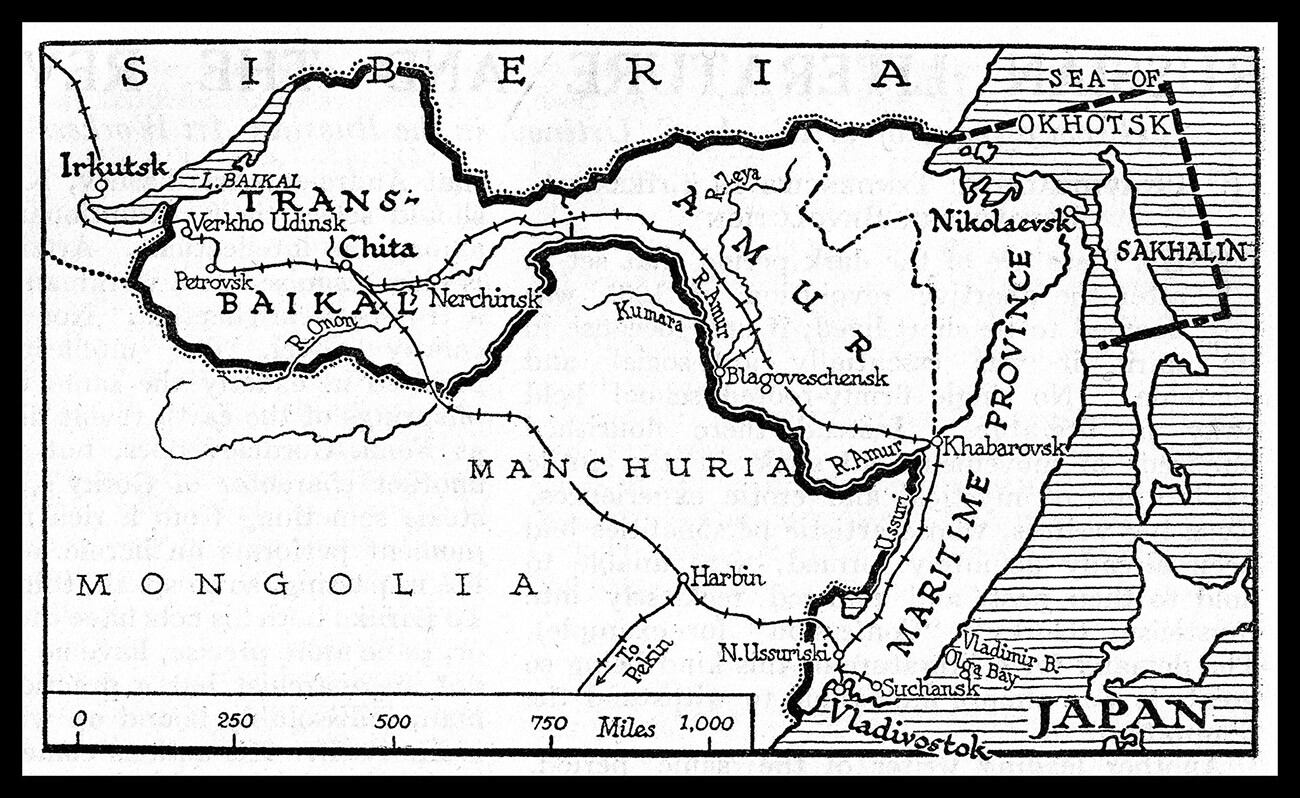
Map of the Far Eastern Republic.
Public DomainBy mid-1919, the Allies were contemplating a gradual withdrawal of their forces from Russian territory: World War I had long since ended, while hopes for the collapse of the Lenin government had been fading with every passing day. At the same time, Japan not only had no intention of withdrawing from Russian territory but, on the contrary, it had started actively building up its military presence there. To Japan, the Civil War in Russia had opened a great window of opportunity.
“The World War gave Japan an unexpected gift, an untouched treasure trove - Siberia. The Japanese… should master the treasure trove that is Siberia… Making it part of Japan - not in the sense of invasion, but in the economic sense - depends on the skill of the Japanese,” wrote I. Rokuro, editor of Japan’s ‘People’s Newspaper’. Slowly, but surely, the Japanese were taking control of the Far East and Eastern Siberia, sometimes acting directly and sometimes through proxies, such as Ataman Grigory Semyonov and Ataman Ivan Kalmykov. The expansionism of the ‘Land of the Rising Sun’ was held back only by fear of an outright popular uprising and the tough stance of the United States, which was against the strengthening of its geopolitical rival.
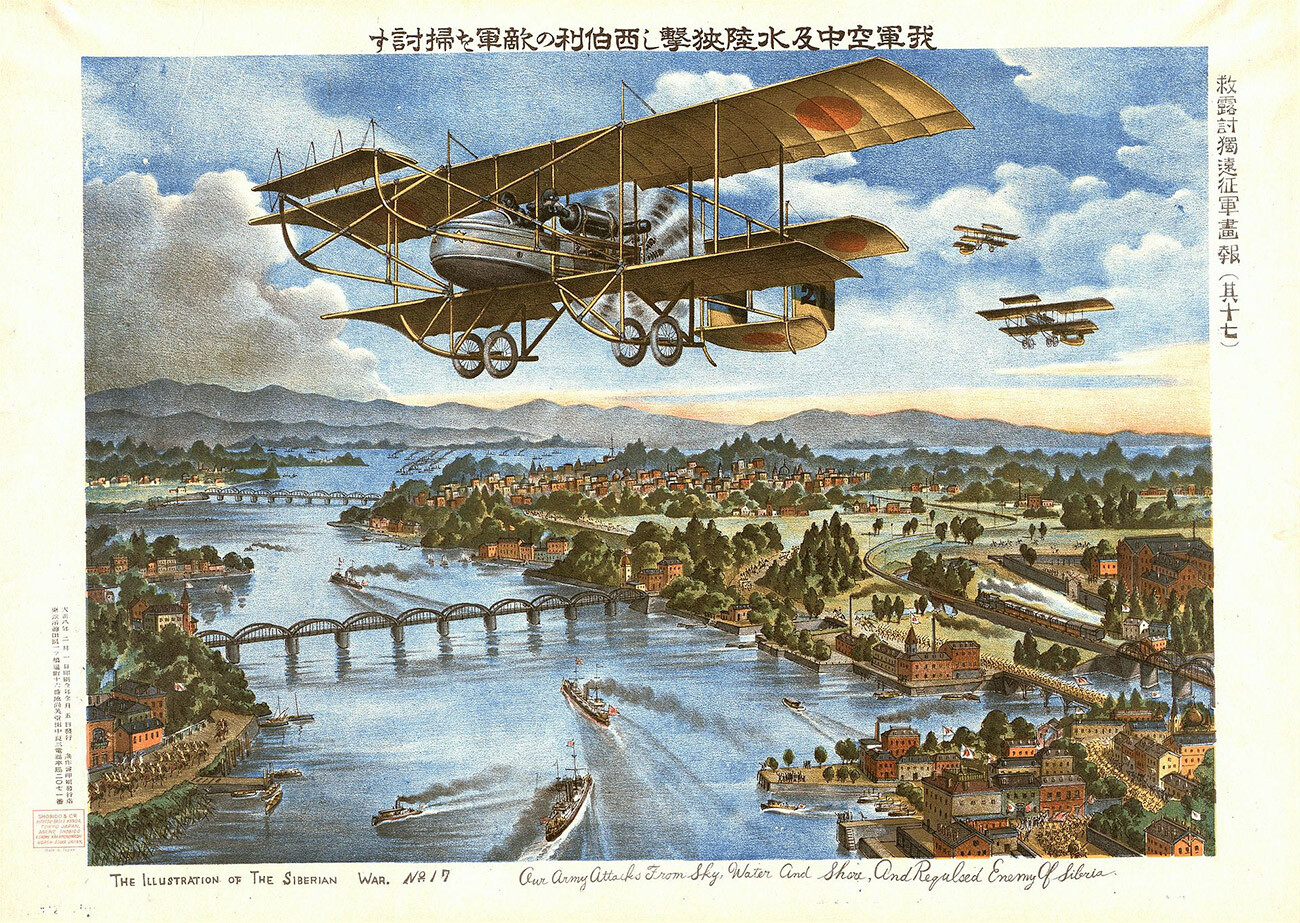
Japanese propaganda during the Civil War in Russia.
Public DomainFor a long time, the Far East was of secondary importance to Moscow: Fierce battles were under way in the European part of Russia and only scattered Red partisan detachments fought against the Japanese. But, between the spring of 1919 and early 1920, the Red Army had managed to defeat the Russian White Army’s Eastern Front, cross the Ural Mountains and launch a rapid offensive deep into Siberia, eventually reaching the approaches of Lake Baikal, beyond which it was not far to the Japanese garrisons.
Considering the ongoing Soviet-Polish War at the time and the presence in the south of the country of large White forces under the command of General Anton Denikin, an outright military confrontation with Japan seemed to the Bolsheviks the worst possible outcome. “We shall prove to be idiots if we allow ourselves to be drawn by a silly agitation into the depth of Siberia and at that time Denikin revives and the Poles strike. This will be a crime,” Lenin telegraphed to Chairman of the Revolutionary Military Council Leon Trotsky in February 1920.
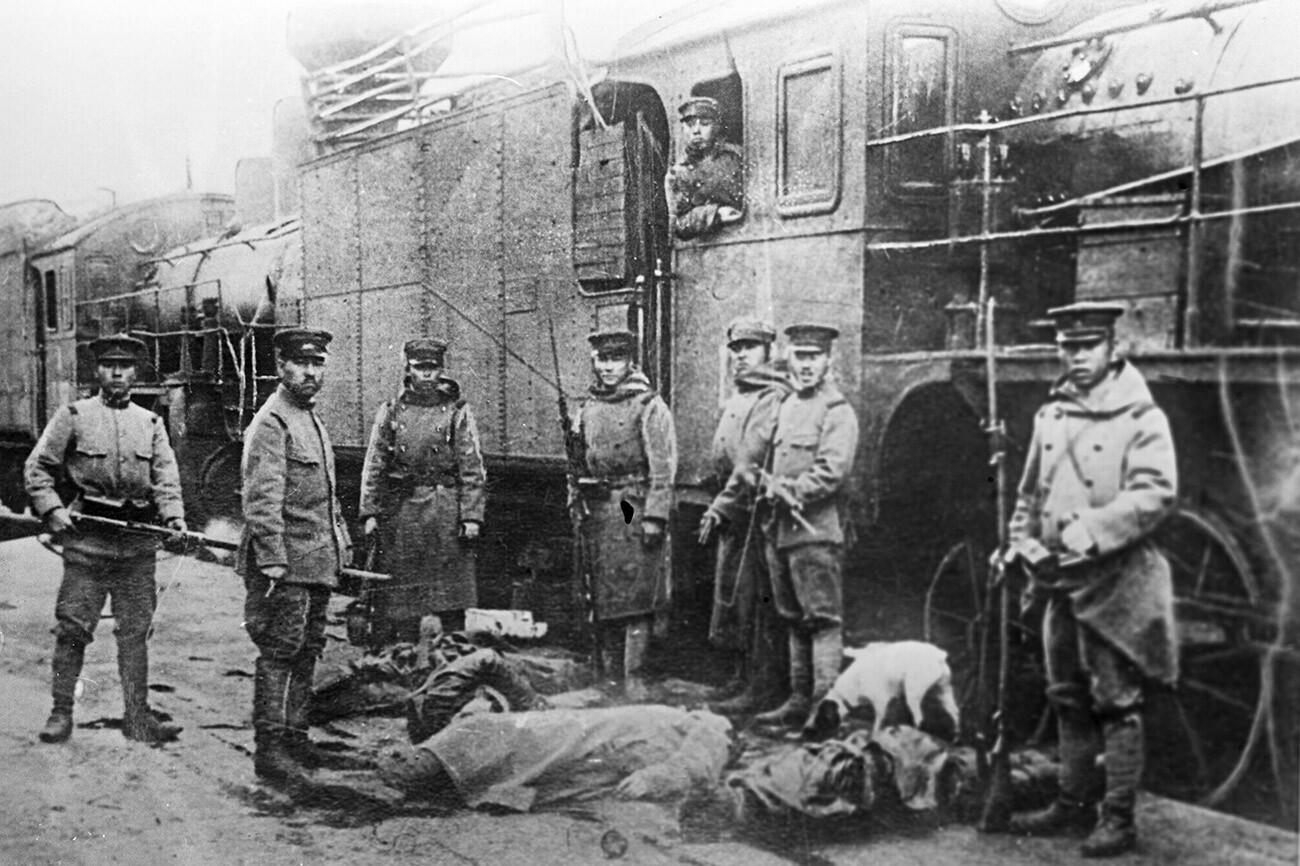
Japanese interventionists standing behind bodies of railway workers executed by them, Russian Far East, 1920.
SputnikThis was when the idea of setting up a buffer state between the territories controlled by Moscow and Tokyo arose. A number of pro-Soviet governments operated in this “no man’s land”, which, on April 6, 1920, at Moscow’s instigation, proclaimed the creation of a Far Eastern Republic (DVR), formally independent of Soviet Russia. The new state officially included enormous territories from Lake Baikal to Northern Sakhalin, although, in practice, many of them were then in the hands of the Whites and the Japanese.
The establishment of the DVR suited almost everyone at that moment: Moscow, Washington, the anti-Soviet forces in Siberia who feared the spread of Soviet power, as well as Tokyo, which immediately started clearing the territories it held of Bolshevik elements, hoping also to subordinate the new state to its own control in the future. Only a number of commanders of Red partisan detachments voiced a protest and the Bolsheviks had to work hard to convince them of the necessity of this temporary measure.
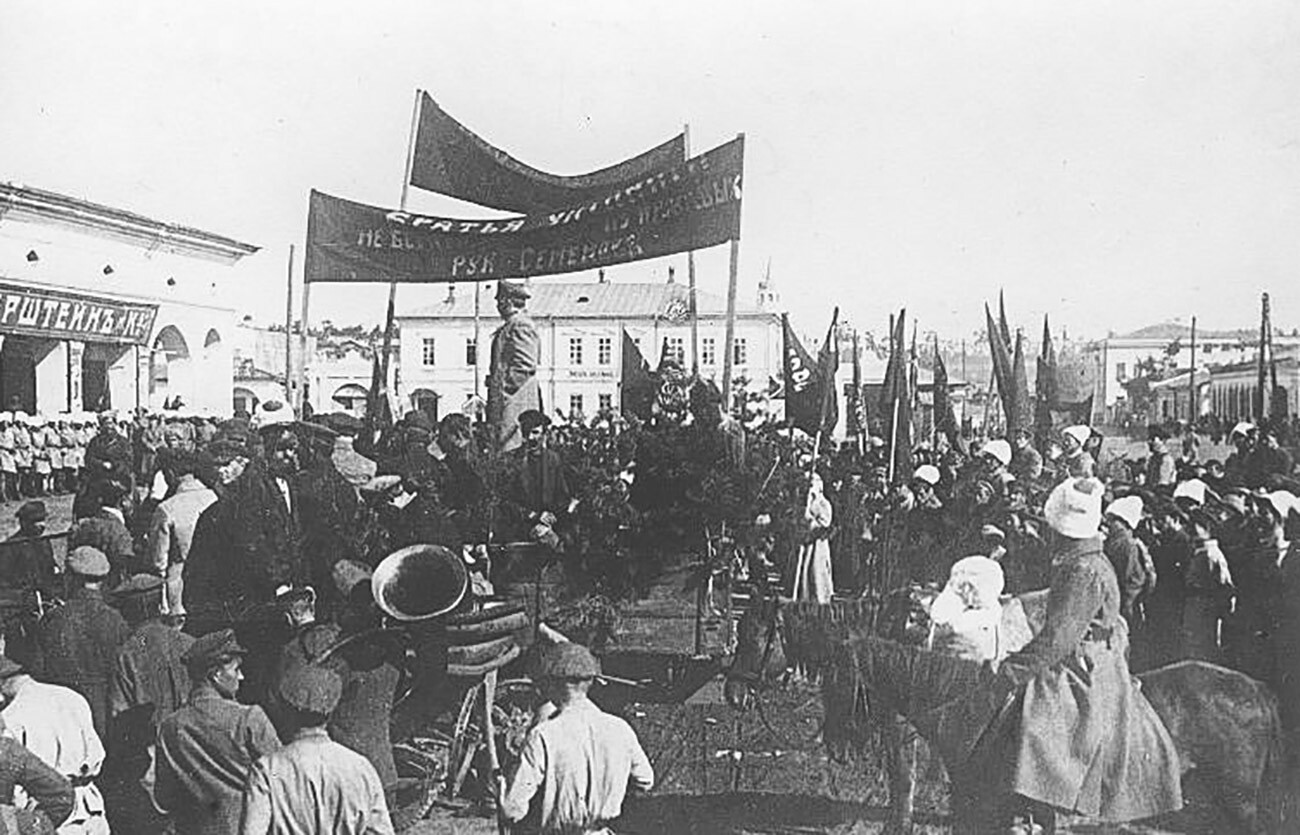
Rally on the proclamation of the Far Eastern Republic.
МАММ/MDF/russiainphoto.ruThe Far Eastern Republic acquired a constitution, a coat of arms, a flag and a currency (the DVR ruble), while institutions of legislative, judicial and executive power were also set up. “Oh, what a jolly republic the DVR was!” recalled writer and journalist Viktor Kin/ “Factions ran rampant in parliament, tabling measures and seeking approval for them, while the speaker pleaded for order. Above the speaker hung a coat of arms, almost the Soviet one, but instead of the hammer and sickle there was a pick and anchor. The flag was red, but with a blue square in one corner. The army wore five-pointed stars - but half blue, half red. And the whole of the republic was like that - half and half.”
When, in July 1920, the head of the republic’s government, Alexander Krasnoshchyokov, asked Lenin what the political set-up in the republic was supposed to be, the latter replied: “Democracy is permissible, but slightly privileging the communists.” In reality, the percentage of Bolsheviks in the country’s leadership was always an overwhelming one.
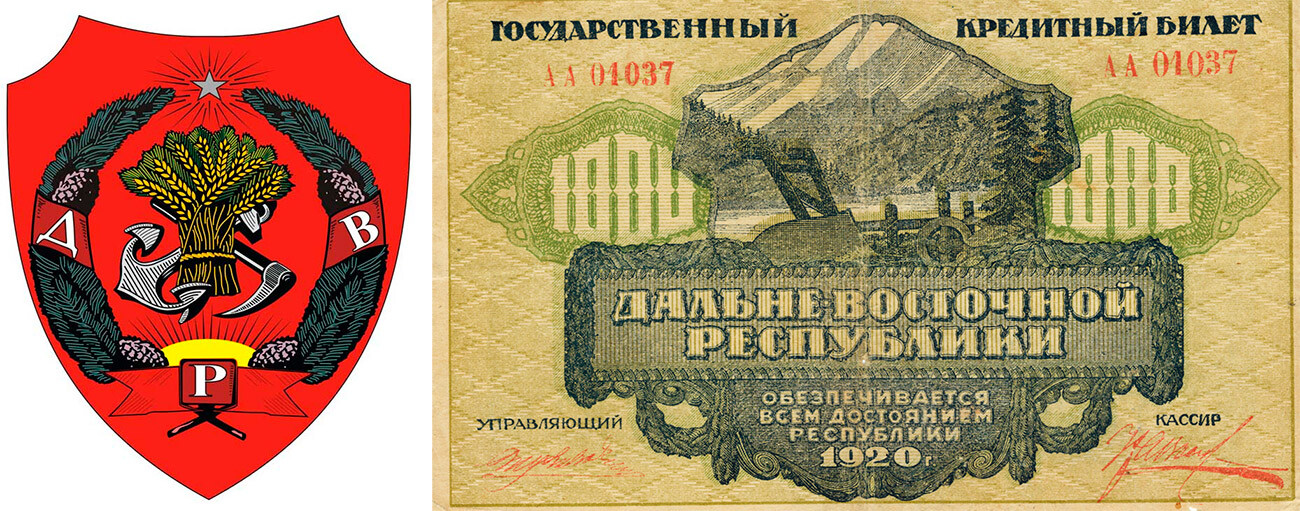
Emblem of Far Eastern Republic/Far Eastern Republic's 1000 rubles.
BFPlayer (CC BY-SA); Public DomainMoscow lent its active support to the Far Eastern Republic with money and resources and also intensively armed its People’s Revolutionary Army, which combined regular troops with numerous partisan detachments. It numbered 100,000 men by November 1920 (the same number of troops as the Japanese had in Russia). Red Army commanders were sent there on command assignments. One of them, Vasily Blyukher, was, at one time, the republic’s war minister and commander-in-chief of its armed forces. Having become a Marshal of the Soviet Union in 1935, he was shot three years later in the mass repressions known as the Great Terror.
The People’s Revolutionary Army was not authorized to fight the Japanese (although the partisan detachments still resisted them), but was active in mopping up the remnants of White army units in the Far East. By October 1920, it had managed to drive the troops of Ataman Semyonov out of a wide swathe of the Transbaikal region and the capital of the state was moved from Verkhneudinsk to liberated Chita. Even earlier, the republic had managed to force the Japanese out of the region through diplomatic means.
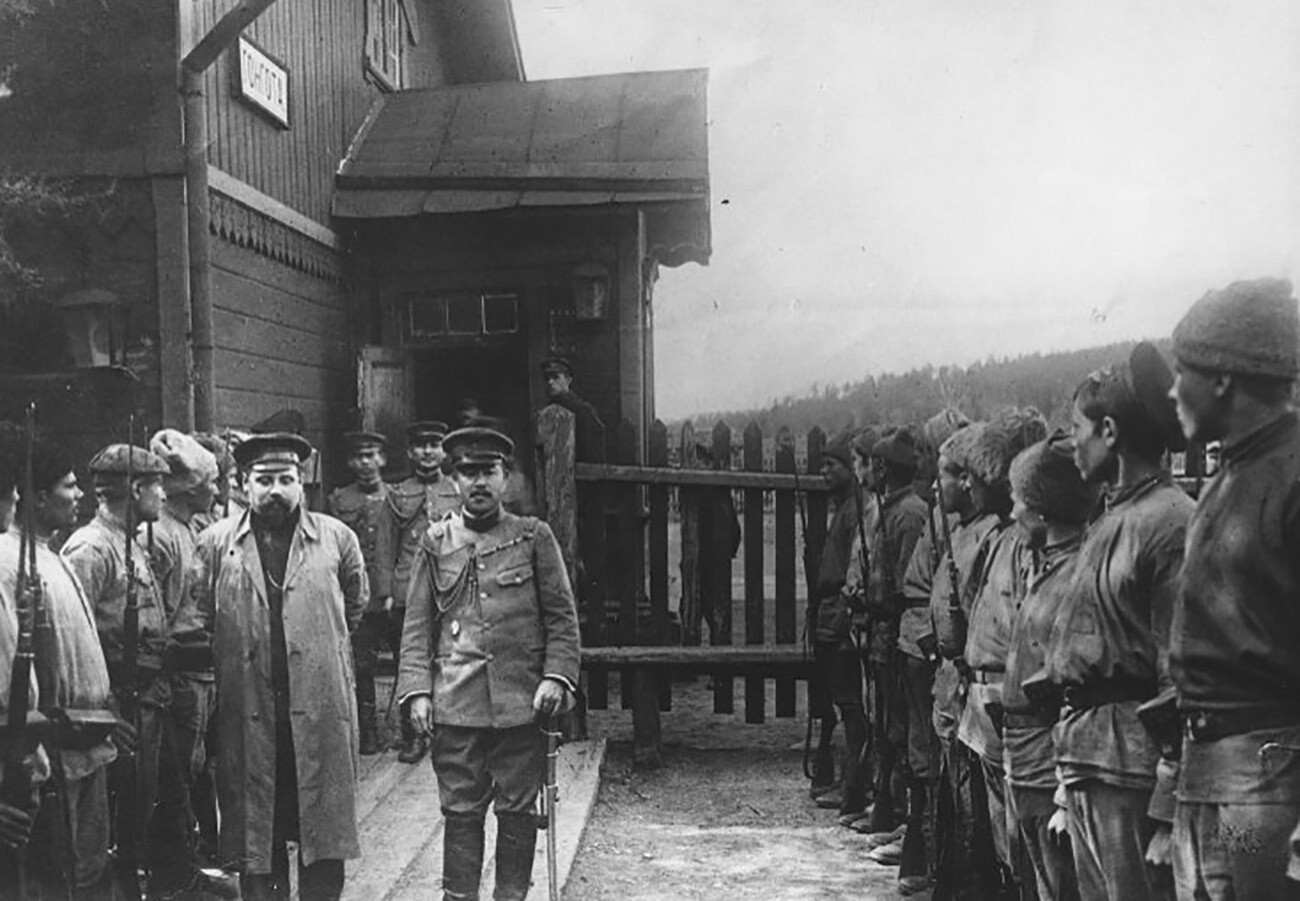
Negotiations between the Japanese and representatives of the Far Eastern Republic.
МАММ/MDF/russiainphoto.ruWithin several years, the sphere of influence of the ‘Land of the Rising Sun’ in the Far East of Russia dwindled to a minimum. Worn out by battling the partisans, the Japanese lost one locality after another. With the People’s Revolutionary Army of the DVR serving as the Bolsheviks’ advance guard in the region, Tokyo began to realize what a formidable force they had become. In February 1922, units of the People’s Revolutionary Army liberated Khabarovsk from the Whites and, on October 25 of the same year, they entered Vladivostok literally hard on the heels of the Japanese garrison that had just been evacuated. Only Northern Sakhalin remained in the hands of the Japanese, but, in 1925, they were forced to hand it back, too.
Following the liberation of the country’s eastern territories from the Whites and interventionists, there was no longer any need for the continued existence of the Far Eastern Republic. On November 14, 1922, the DVR People’s Assembly declared its self-dissolution and asked Moscow to “incorporate the Far East in a unified Russian Socialist Soviet Republic” - something that was expeditiously carried out.
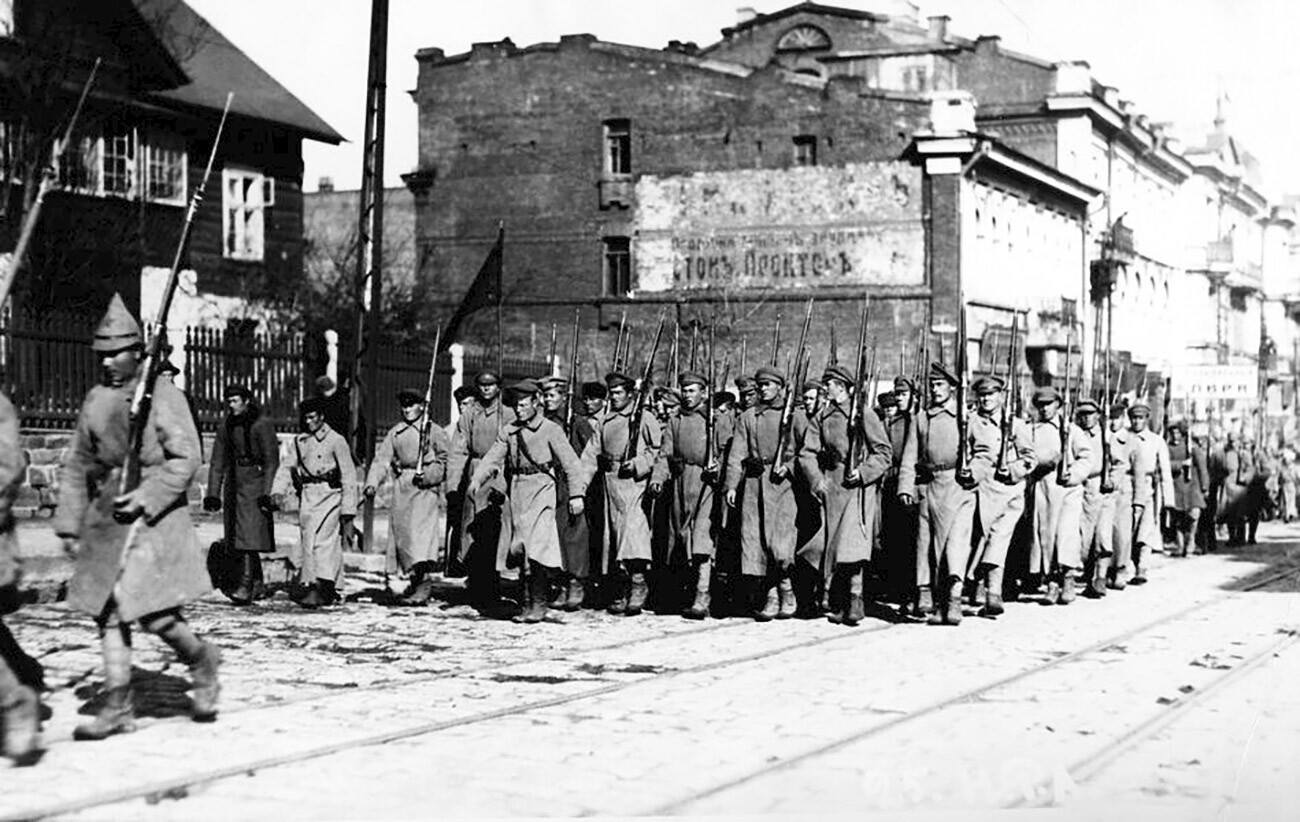
The People’s Revolutionary Army entering Vladivostok.
МАММ/MDF/russiainphoto.ruIf using any of Russia Beyond's content, partly or in full, always provide an active hyperlink to the original material.
Subscribe
to our newsletter!
Get the week's best stories straight to your inbox